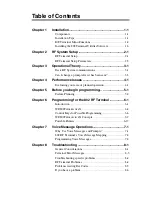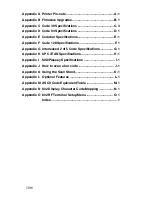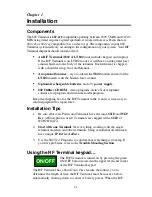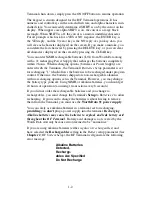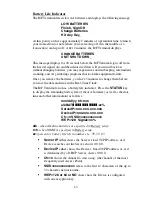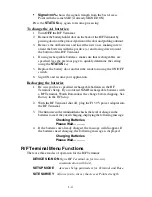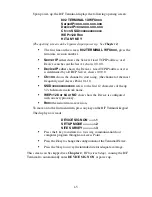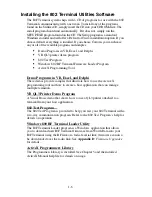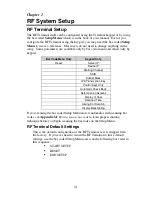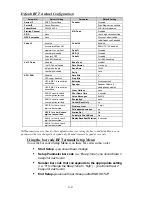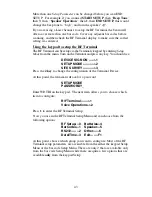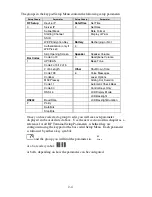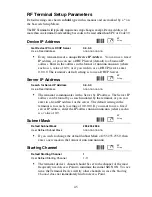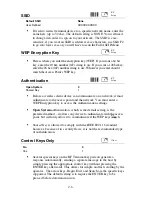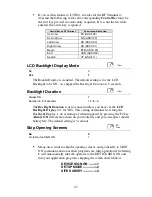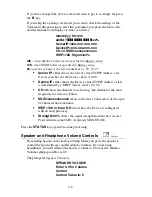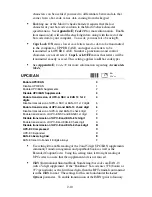
1-1
Chapter 1
Installation
Components
The 802 Terminal is 802.11b compatible operating between 2399.5 MHz and 2474.5
MHz using direct sequence spread spectrum; it works with Access Points that are
802.11b or 802.11g compatible (b is a subset of g). The components in your 802
Terminal system will vary according to the configuration of your system. Your R/F
Terminal shipment should contain at least:
•
An R/F Terminal T802 or LT802 (unit includes keypad and display).
If the R/F Terminal is an LT802 model, it will have an integrated laser
scanner built-in to the body of the terminal. Each terminal is shipped
with a shoulder strap, boot, and Manual.
•
An optional Scanner – if you ordered the T802 models instead of the
LT802 models with the built-in laser scanner.
•
Optional rechargeable batteries and a 9v power supply.
•
802 Utilities CD ROM – demo programs, Active X development
software, test program, and firmware loader program
Keep the shipping box for the R/F Terminal in the event it is necessary to
return equipment for repair later.
Installation Tips
1. Be sure all Access Points and Terminals have the same SSID and WEP
Key, (if Encryption is used). Terminals are shipped with a SSID of
WORTH DATA.
2.
Start with one Terminal. Get everything working with the single
terminal and then add other terminals, being certain that all terminals
have unique IP Device Address.
3. Use the 802 Test Programs to validate that everything is working. If
you have problems, refer to the
Trouble Shooting Section.
Using the RF Terminal keypad…
The R/F Terminal is turned on by pressing the green
ON/OFF button located in the upper left-hand corner
of the R/F Terminal keypad.
The R/F Terminal has a Shut Down Time feature that allows you to
determine the length of time the R/F Terminal must be inactive before
automatically shutting down to conserve battery power. When the R/F


